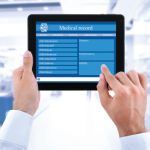In Part 1 of this series, we covered the vital role of medical decision making in determining the final level to bill for a patient encounter. Medical decision making is the key component in coding because it reflects the intensity of the provider’s cognitive labor. This implies that there’s an unseen component involved in the Medicare Documentation Guidelines for Evaluation and Management (E/M) Services that directly affects reimbursement for physician services. The guidelines clearly advise what a reviewer would look for to determine the level of decision making, but there’s not enough information for providers to plainly determine the level.
The process of medical decision making requires providers translate their internal clinical thoughts to paper for the care of a patient. This is where a provider’s thought process is quantified—and sometimes deemed the primary role in providing a summary documentation of a visit. Providers must confirm the medical record documentation supports the level of service reported to a payer and not necessarily use the volume of documentation to determine a specific level of service to bill. Services are to meet specific medical necessity requirements in the statute, regulations and manuals defined by National Coverage Determinations and Local Coverage Determinations (if any exist for the service reported).
The CMS defines medical necessity as, “healthcare services or supplies needed to prevent, diagnose or treat an illness, injury, condition, disease or its symptoms and that meet accepted standards of medicine.” In any of those circumstances, if a condition produces debilitating symptoms or side effects, then it is also considered medically necessary to treat those. The CMS continues, “No Medicare payment shall be made for items or services that are not reasonable and necessary for the diagnosis or treatment of illness or injury or to improve the functioning of a malformed body member.”
In claim reviews, someone other than the provider is trying to confirm the level of decision making that is billed on a claim, but if auditing is involved, someone else is tasked with determining if the medical decision making meets the level of coding. Although EHRs have done a great job in managing a lot of information in patient notes, the following information is designed to assist providers with the tools to quantify the thoughts that are documented during a patient encounter.
Diagnoses & management options: Document the number of problems addressed during the visit that are relevant to the presenting problem. If there is a new problem, verify that this is clearly stated in the history of present illness, review of systems or examination. Showing how the patient condition is being handled is at the heart of disease management. The history and examination are not always enough to reach a diagnosis, so it is important to document what other work was done to arrive at a definitive diagnosis.


